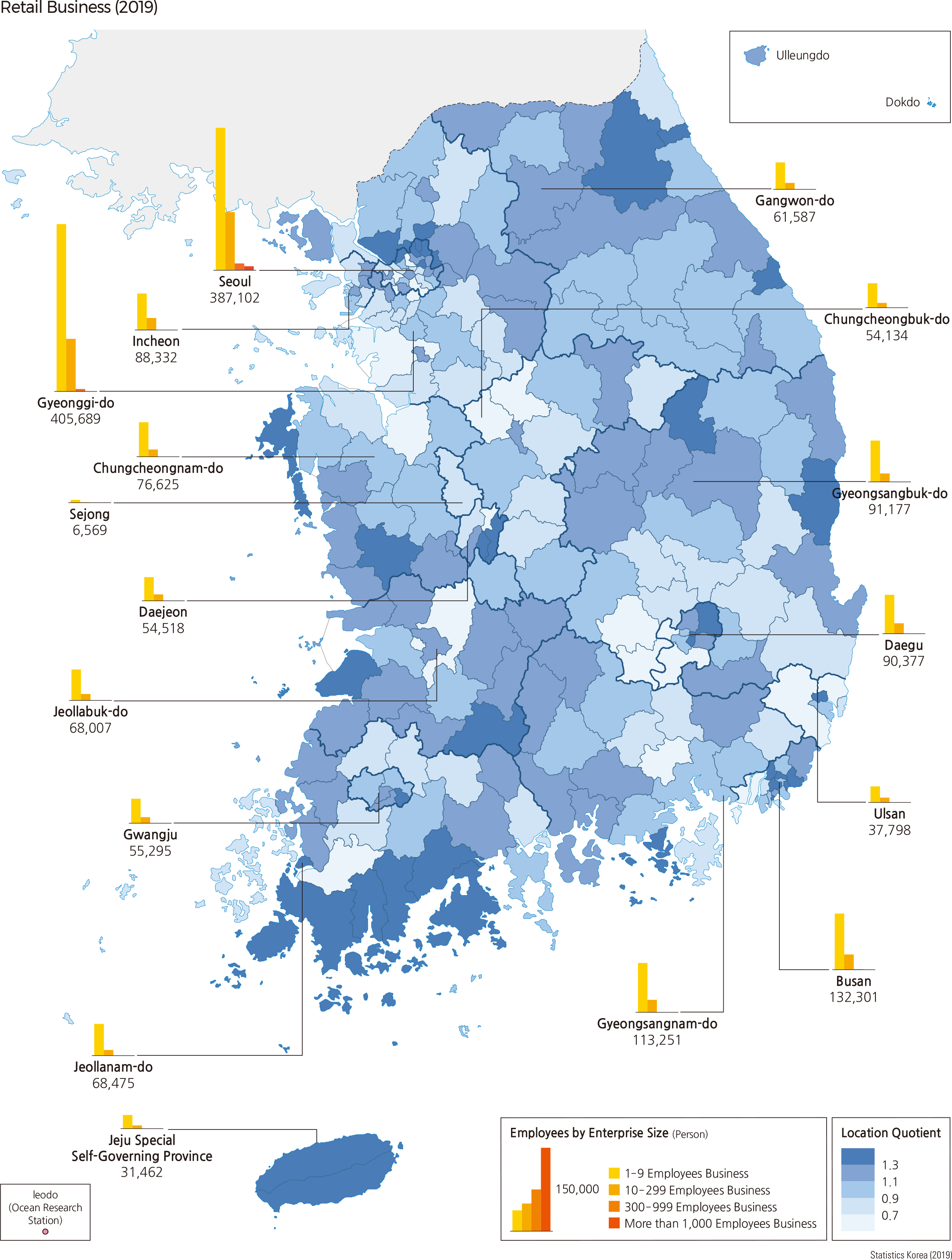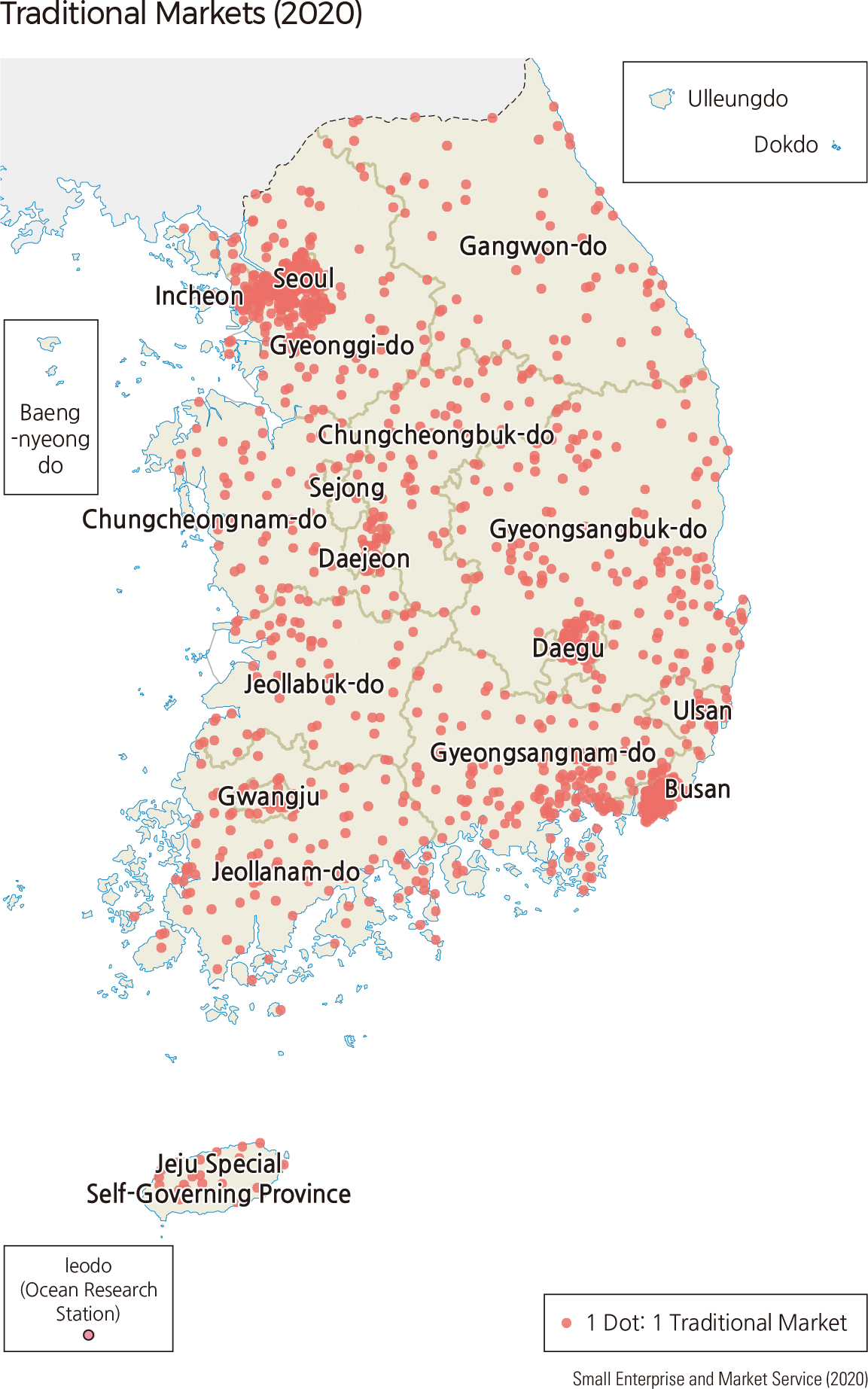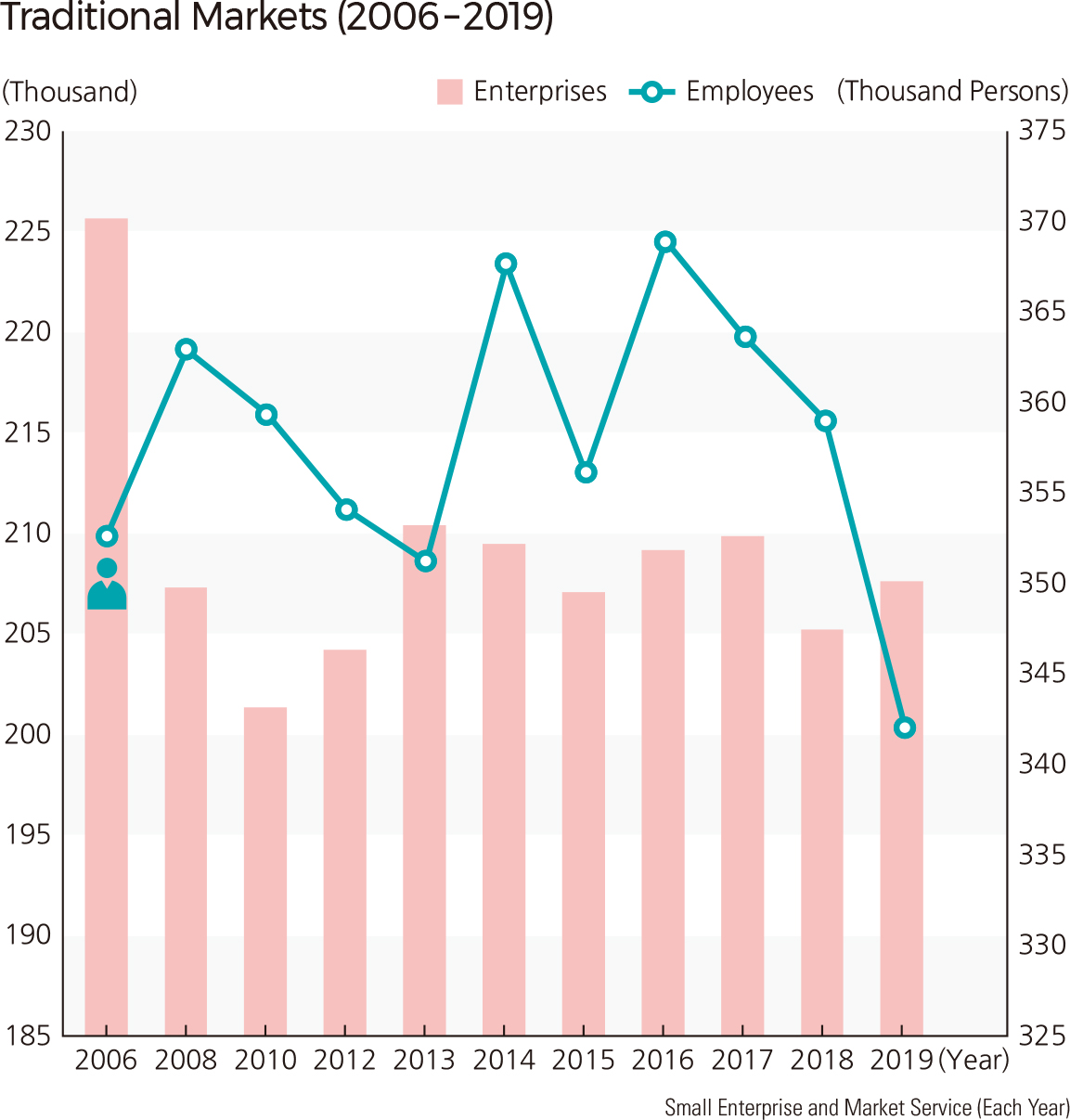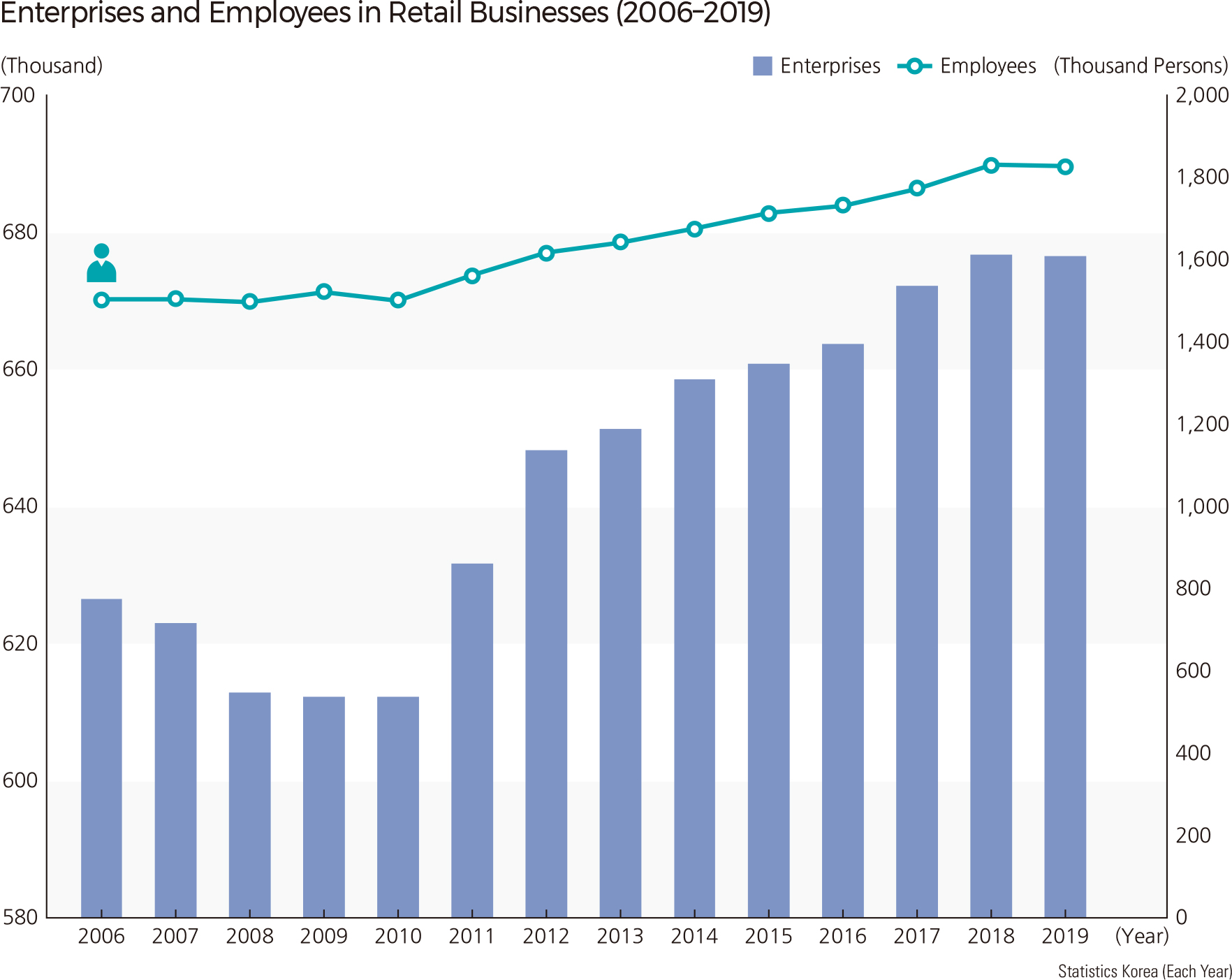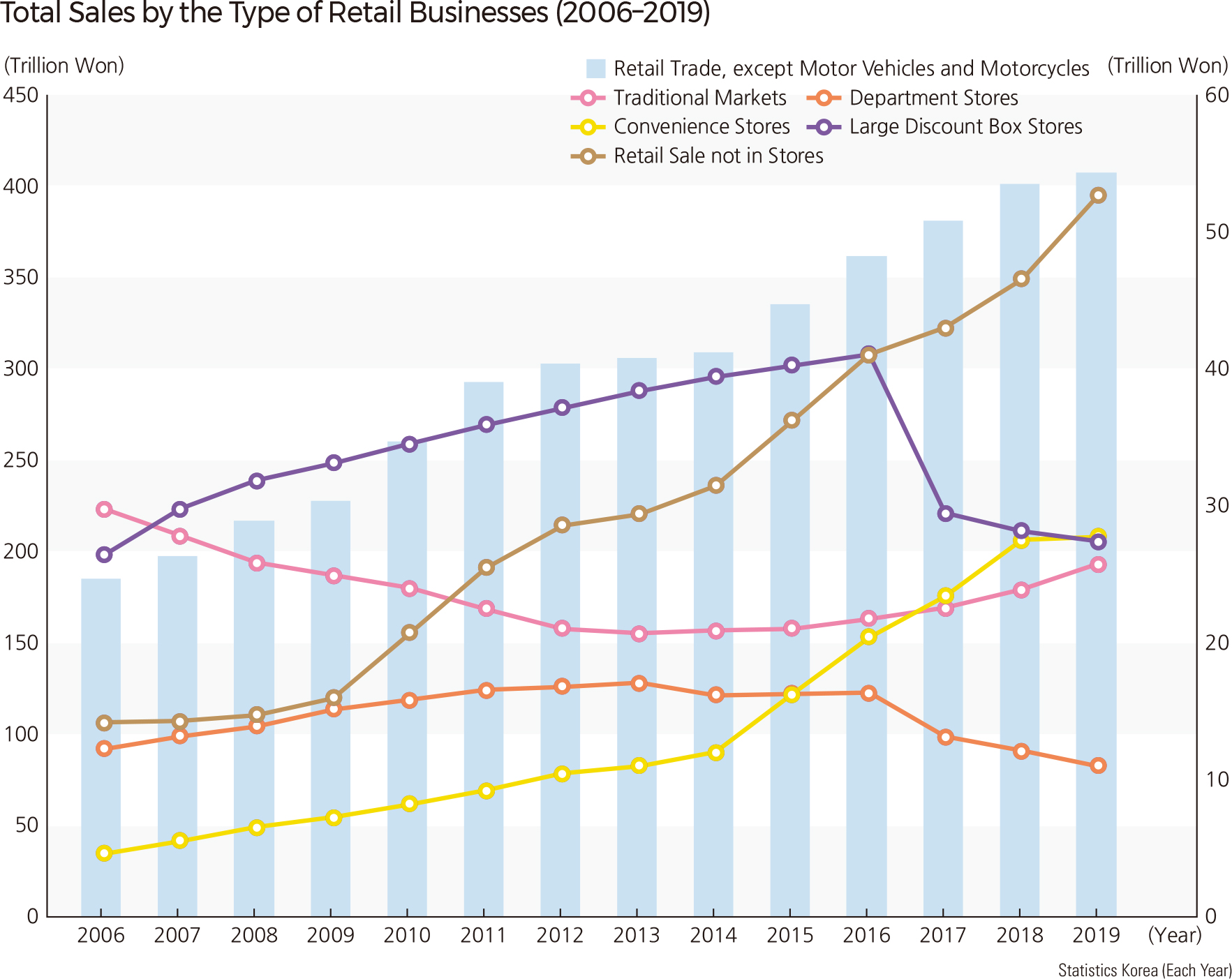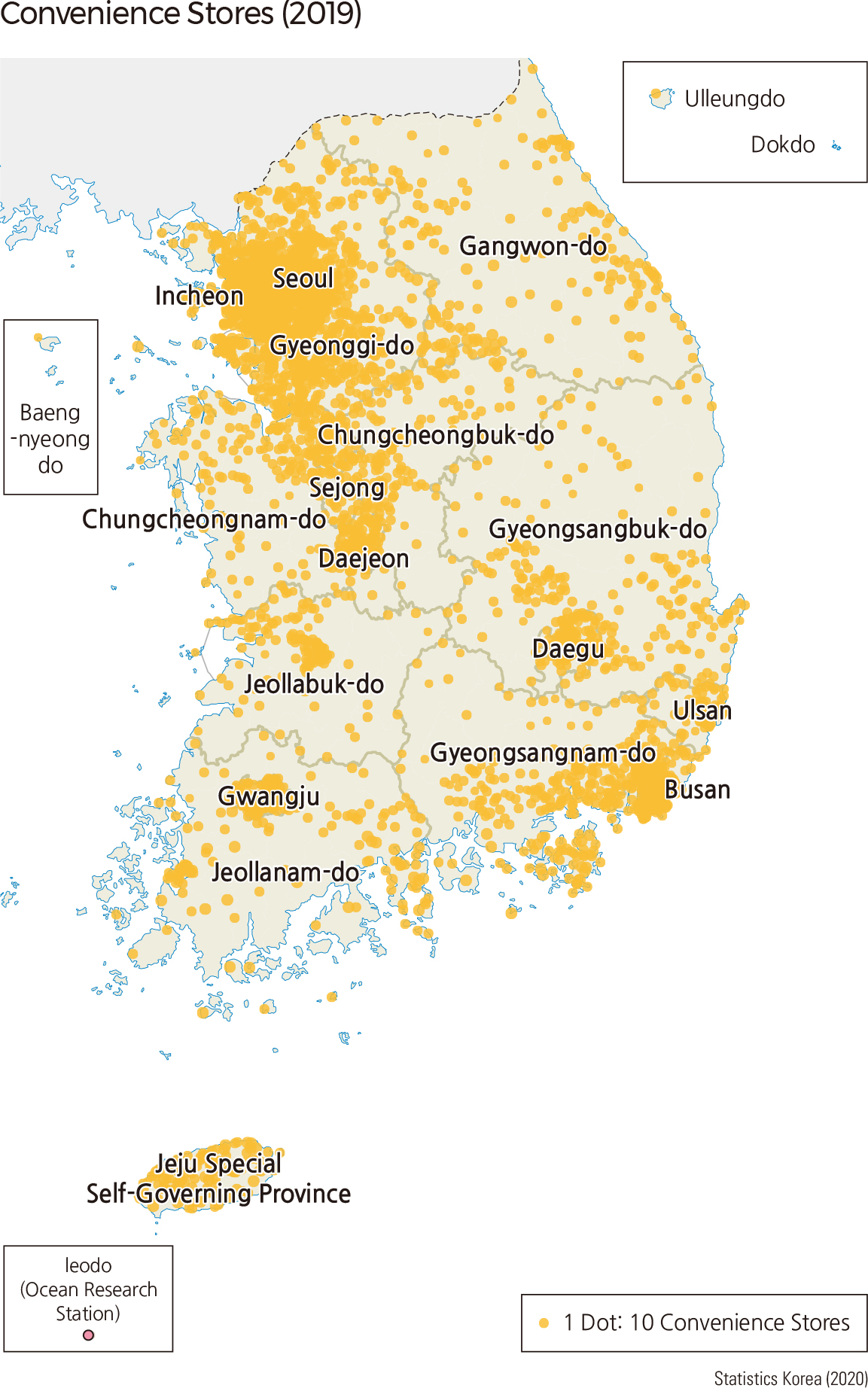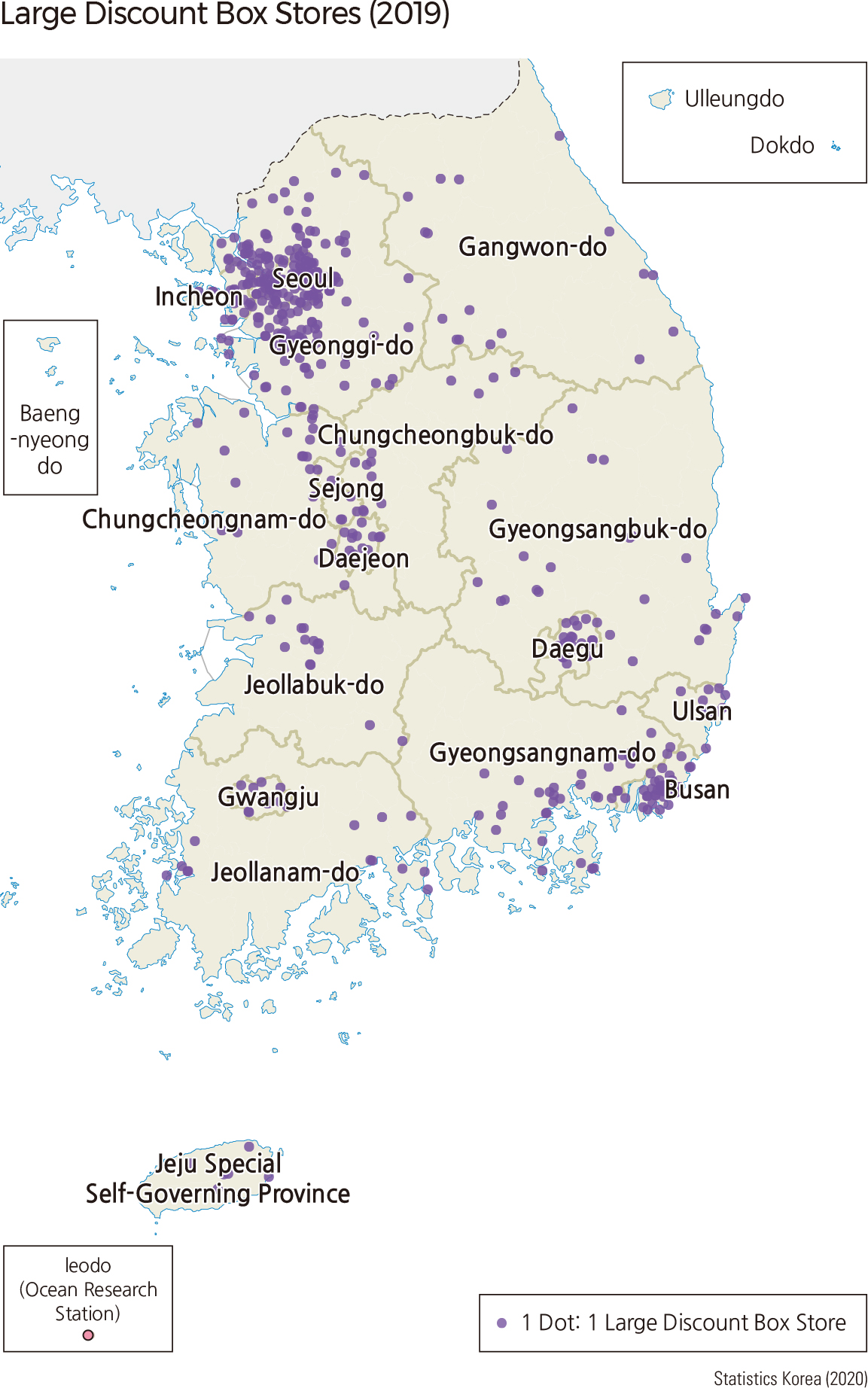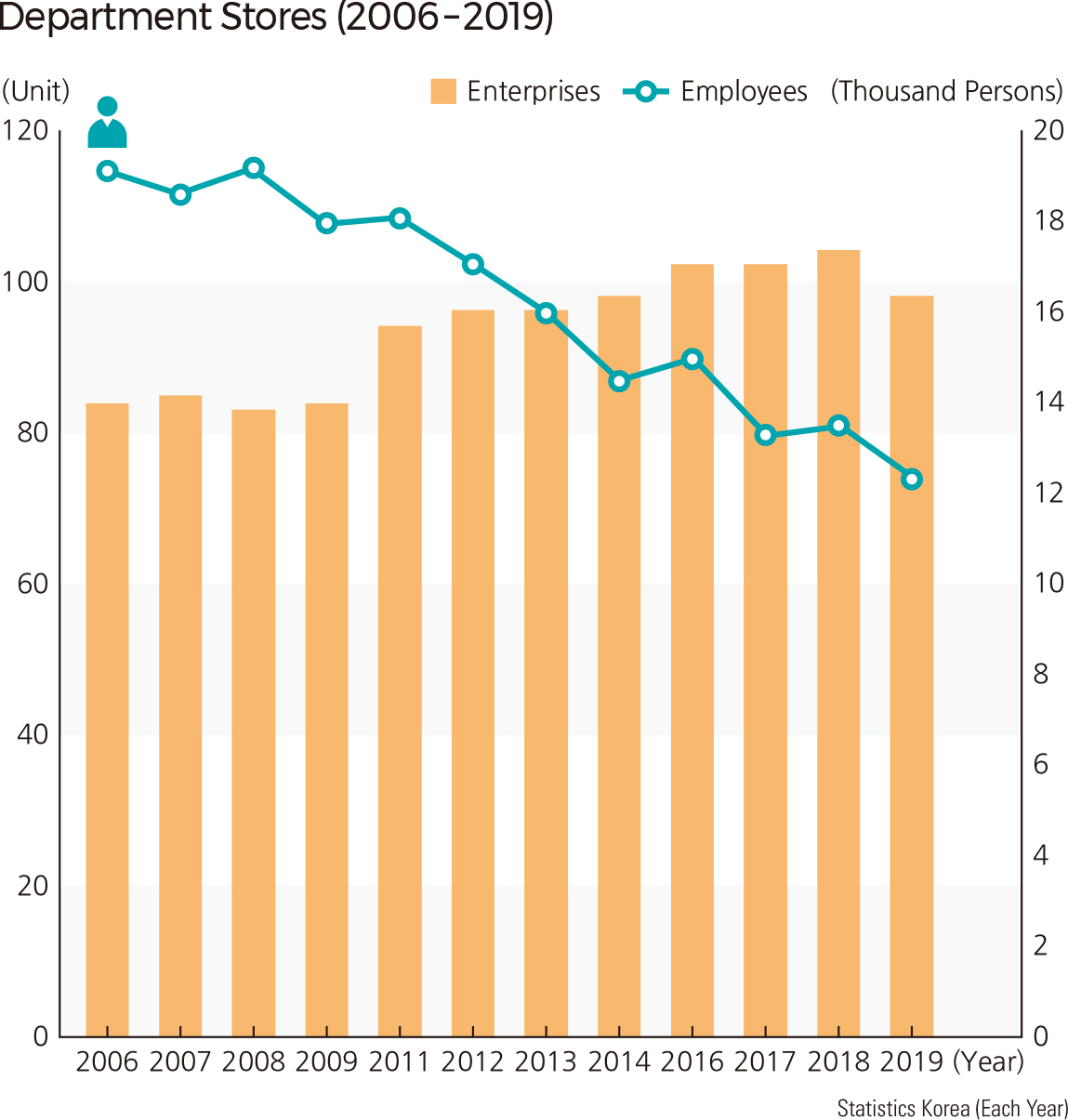English III 2021
The rapid industrialization after the Korean war has improved the overall standard of living, followed by increased purchasing power and more demand for a variety of goods. As automobiles become readily available, both the distance traveled to purchase goods and the amount spent on purchases per visit have increased. In addition, safer online banking made electronic shopping more readily available with easy access to the internet. The retail shopping patterns of Korean society have to respond to this socio-economic environment and the changes in consumer lifestyles. In the past, the retail structure was relatively simple, with corner grocery stores, traditional open-air markets, and department stores. However, after the 1970s, retail became more diversified. Supermarkets were first introduced, followed by convenience stores, discount stores, all-inclusive, one-stop stores, TV home shopping, and online shopping malls. Large-scale department stores grew continuously in the early twentieth century by satisfying the demand for rare, high-quality goods. Total sales increased steadily except during times of economic depression; however, the number of establishments remained small. Convenience stores, although they have relatively small business space and limited goods, have the advantage of long business hours and great accessibility. In the early 1990s, convenience stores grew continuously with the end of the Korean curfew system and the liberal and social atmosphere after the Seoul Olympics of 1988. After a brief slump during the financial crisis in 2009, the number of business establishments increased tremendously. After the large discount box stores were first introduced in 1993, they went through the mediation of the IMF. With the availability of automobiles and large refrigerators, consumers’ shopping patterns have shifted toward rational yet discounted purchases. Long-distance shopping trips, weekend one-stop shopping, and buying in bulk became new shopping behaviors that helped the growth of discount box stores. Since 2000, the market for discount box stores has been saturated, so that the growth of box stores has slowed down. The government has implemented several policies to protect the small retailers of the open-air markets. As a result, both small- and medium-scale retailers can coexist with the large, corporate-owned retailers. While new retail venues such as convenience stores and box stores grew, the traditional open-air market lost its popularity in retail. With advanced information and communication technologies, e-commerce, such as TV home shopping and Internet shopping, is rapidly growing. In addition, thanks to the stabilization of electronic financial payment and delivery, online stores can handle a variety of products compared to traditional retail stores. Recently, as non-face-to-face commerce is preferred due to the spread of the COVID-19 epidemic, the growth has accelerated.
|
